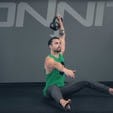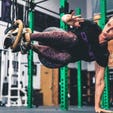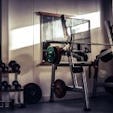
Think about pressing a 35lb kettlebell; even if you can press it ten times on one arm you may not be able to press a 70lb kettlebell once.
In the last remake of the film Godzilla, I couldn’t help noticing that he lacked rotational strength (either that or he just wasn’t using it in any capacity). You are probably wondering how the heck I came up with that observation; I tend to watch destructive, pointless movies while I either write or brainstorm for articles. This just happened to be what I was watching when I was thinking about this one.
You see, with a massively large tail capable of increasing the destruction load of the movie in every twist, Godzilla failed to deliver. I was expecting buildings and opponents to crumble from an armor-plated, tail lashing. But alas, there was no tail smashing, therefore I assume he has little rotational strength to exploit.
So, without a powerful rotational axis, what did he have to take down buildings and not get destroyed by enemies? This Godzilla must have had a very solid torso as well as spinal bracing strength AND he was just freaking huge. These are two qualities we’re looking for in a Heavy Kettlebell Strength Program.
Strength or Athleticism
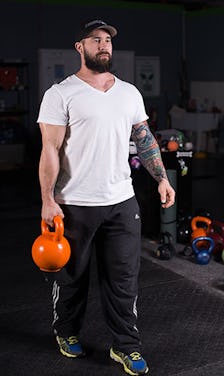 Maximum strength and athleticism should be trained very differently depending on your goals. Calisthenic fans may be able to do multiple Pistol Squats, 1-Arm Push Ups, and Human Flags, but not many are going to be able to Barbell Squats with 400-500lbs on their backs.
Maximum strength and athleticism should be trained very differently depending on your goals. Calisthenic fans may be able to do multiple Pistol Squats, 1-Arm Push Ups, and Human Flags, but not many are going to be able to Barbell Squats with 400-500lbs on their backs.
On the other hand, elite powerlifters may be able to Squat and Bench Press several times their bodyweight, but you rarely see an instagram picture of them performing a Human Flag on a subway car.
I love kettlebell training due to the fact that you can develop strength and athleticism. Athletes rarely have both hands on a static surface such as we do when we train with a barbell. Usually, one arm is doing one task while the other is independent of that arm.
This is why training unilaterally with one kettlebell or dumbbell is great for developing multiple planes of stability at the same time. But for a heavy kettlebell strength program we’re going to focus on two things: heavy weight and time under tension.
Heavy Weight & Time Under Tension
Think about pressing a 35lb kettlebell; even if you can press it ten times on one arm you may not be able to press a 70lb kettlebell once.
You have developed endurance strength with the 35lb kettlebell, not maximal strength. For maximal strength we need
progressively heavier weights, and since we’re not training with machines, we need a stable torso and spine that can handle the load we are asking of it. Sometimes it must be for a longer duration, because the weight is going to be moving slower if your are truly pushing higher percentages of your maximum strength.
For heavy Kettlebell Front Rack Squats and Overhead Presses, you’re going to need lateral stability and endurance. You need to be as even as possible from the left to the right. People can cheat a barbell up, but it’s harder to cheat with a kettlebell in both hands. Training your torso to be solid as a rock is what you need here! That is developed with torso stiffening exercises such as anti-rotation and joint stabilization. Strength will come from the center, so make sure you’re taking it into consideration.
Slipped Discs & Compressed Vertebrae Aren’t Cool
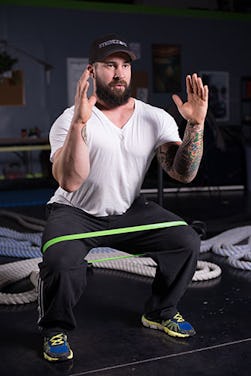 Face it, a hurt back sucks and you can’t train with it. Listen to your body and heed its cues for rest and recuperation. Some of you may take years to ever press that 70lb kettlebell. That’s ok, it’s the journey that matters. If you are serious about lifting some heavy kettlebells we need to first make sure that your spine is ready for it.
Face it, a hurt back sucks and you can’t train with it. Listen to your body and heed its cues for rest and recuperation. Some of you may take years to ever press that 70lb kettlebell. That’s ok, it’s the journey that matters. If you are serious about lifting some heavy kettlebells we need to first make sure that your spine is ready for it.
I’ve been reading a lot of Stuart McGills Ph.D. work on performance training, and I have to say it has really changed my training for the better (note that McGill calls the kettlebell swing a “high level therapeutic exercise” if done correctly). Even though I like to lift heavy weights, it’s more important to me that I’m able to do it for a lifetime instead of a decade.
Your spine transfers the load you are lifting from your shoulders to your hips. Take care of it and learn how to brace it with no movement. Think about standing on a bent ladder; no one wants to do that.
Heavy kettlebell weight training exercises such as Deadlifts, Front Rack Squats, Standing Overhead Presses, Snatches, and Turkish Get Ups require intense concentration on keeping the spine stable so that no shearing or rotational forces are produced.
This keeps the spine healthy, and please note that I said heavy. Under really light weights and sports movements your spine is meant to be mobile. We just don’t want that rotation and flexion/ extension in the spine under maximal loads. Save the movement for the hips and shoulders.
5 Exercises To Support Heavy Kettlebell Strength Programs
Here are five exercises including benefits, sets, and reps to help support your heavy kettlebell strength building program (remember, these are ASSISTANCE exercises to support your heavy training program). There are plenty of mass building programs out there; these are exercises that many people pass up or forget about because they’re not so flashy, but all proper training programs should include longevity measures!
#1: Birddog
Trains all portions of the spinal erectors and ensures stabilizing muscle activity without too much spinal loading. try 3-4 sets of 6-8 second holds on each side.
#2: 1-Arm Farmers Carry with a Kettlebell
Helps train the ability to move and breathe while maintaining a solid torso. Great for lateral stability in the hips from using Quadratus Lumborum and Lats to stabilize the hip. Try short walks on each side, working up to longer walks for grip and stabilization endurance.
#3: MiniBand or Hip Circle Walks and Squats
Helps to engage the whole glute complex including the glute medius, which is important in stabilizing the knee in relationship to the hip. Try quarter squat lateral walks for distance. This will build endurance in the muscle, also try squats for 2-3 sets of 10-15 reps as a good specific motion warm up.
#4: Training Rope Pull
Works hips and anti-rotation of the torso, plus builds grip strength. Pull a heavy tire for as long as you wish, just keep good form and avoid overreaching.
#5: Palloff Press
Excellent stability and anti- torso rotation exercise. Try 3-4 sets of 6-10 reps on each side.
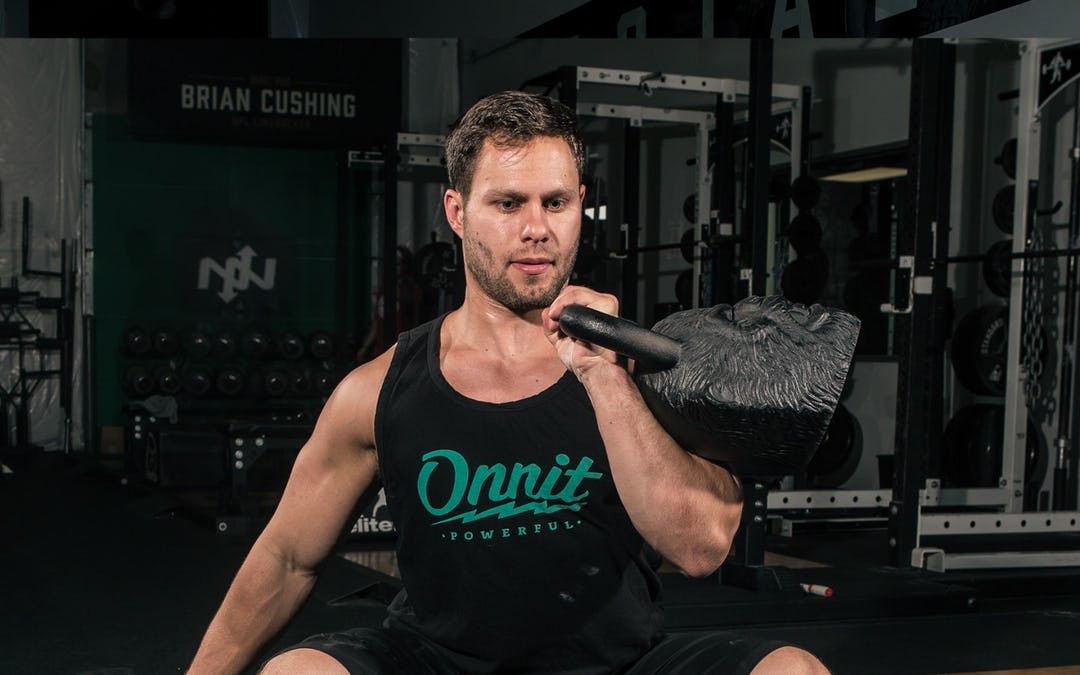
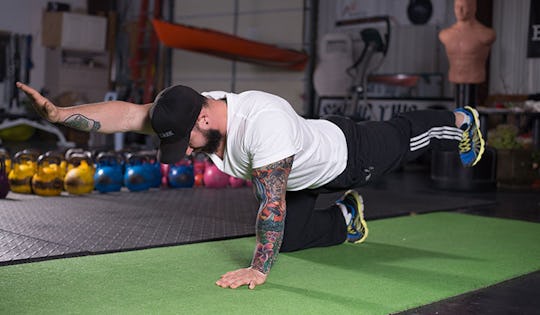
)

